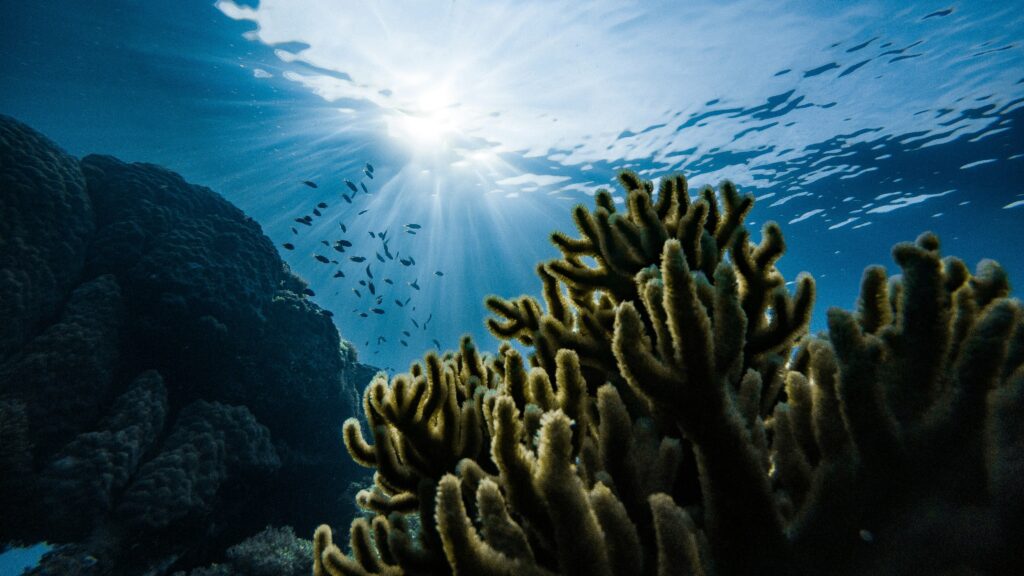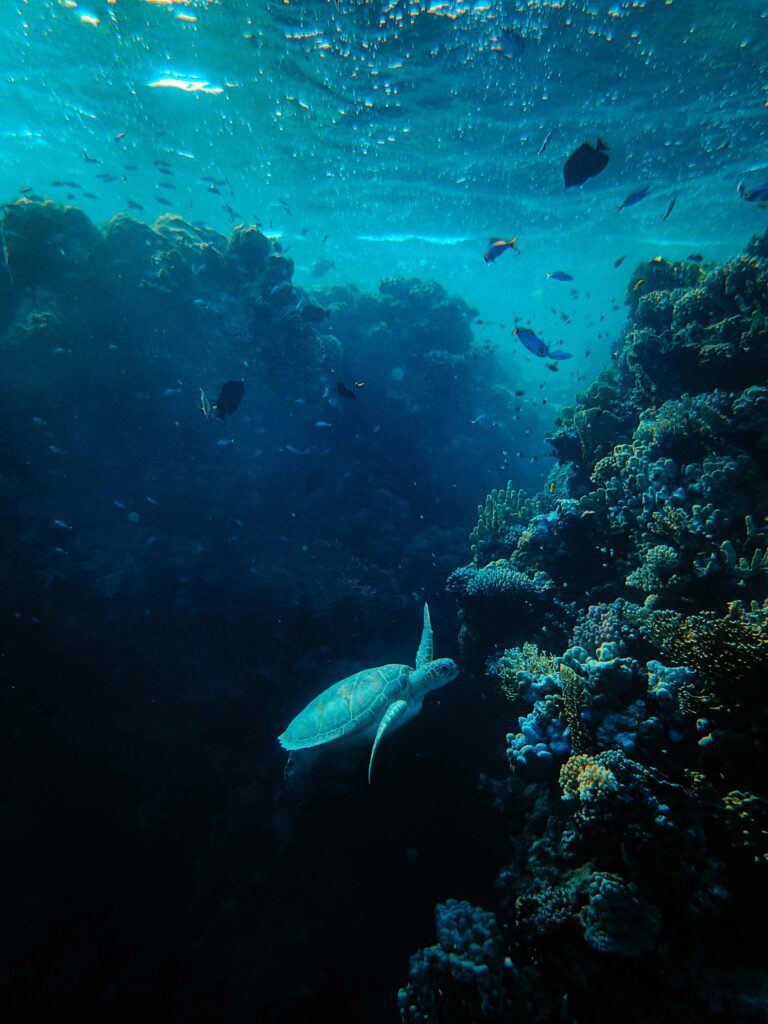The depths of the ocean hold a wealth of mysteries, from the darkest trenches to the sunlit shallows. Within these watery realms, a multitude of strange and unusual creatures dwell, defying our expectations and captivating our imagination. In this article, we will embark on a journey to explore some of the most bizarre marine life forms that inhabit our oceans. From peculiar adaptations to downright otherworldly appearances, these creatures remind us of the incredible diversity and wonder of life beneath the waves.
Anglerfish: Masters of Bioluminescence
The Enigmatic Glow
Anglerfish, renowned for their eerie glow, inhabit the deep-sea realms where sunlight fails to penetrate. This glow, known as bioluminescence, serves as a beacon in the darkness, enticing prey and aiding in navigation. Their unique ability to produce light emanates from specialized organs called photophores, strategically placed along their bodies.
Lure and Ambush Tactics
Among the most fascinating adaptations of anglerfish is their use of a bioluminescent lure suspended from their heads. This lure, resembling a fishing rod with a luminous tip, attracts unsuspecting prey in the depths. Once prey draws near, the anglerfish swiftly ambushes, employing its enormous mouth and sharp teeth to capture its meal.
Extreme Sexual Dimorphism
Another remarkable feature of anglerfish is their extreme sexual dimorphism. Females, significantly larger than males, possess the iconic angler and bioluminescent lure. Meanwhile, males, much smaller in size, often attach themselves parasitically to females, becoming essentially fused to their bodies to reproduce.
Gulper Eels: Stretchy Stomachs and Enormous Jaws
Elastic Feeding Mechanisms
Gulper eels, also known as pelican eels, possess a unique adaptation in their feeding strategy. Their most distinctive feature is their remarkably elastic stomachs, capable of expanding to accommodate prey much larger than themselves. This allows them to swallow prey whole, even if it’s many times their own size.
Enormous Jaws for Ambush
With disproportionately large mouths and fang-like teeth, gulper eels are well-equipped for ambush predation in the deep sea. They often lie in wait, concealed in the darkness, until unsuspecting prey ventures too close. Then, in a sudden burst of movement, they engulf their prey with their cavernous mouths.
Bioluminescent Displays
Similar to anglerfish, gulper eels utilize bioluminescence, albeit in a different manner. They have light-producing organs at the tip of their tails, likely used for communication and camouflage in the depths where sunlight does not penetrate. These bioluminescent displays may also play a role in attracting prey or potential mates.
Viperfish: Needle-Like Teeth and Menacing Appearance
Formidable Teeth and Jaw Structure
Viperfish are aptly named for their resemblance to the venomous snake, with long, needle-like teeth and a menacing appearance. These teeth, angled inward, are ideal for grasping and impaling prey, ensuring a secure hold as they capture their meals in the darkness of the deep sea.
Adaptations for Life in Darkness
Living in the abyssal depths where light is scarce, viperfish have evolved specialized adaptations for survival. Their large, sensitive eyes allow them to detect even the faintest traces of bioluminescence, giving them a crucial advantage in locating prey and avoiding predators in their dark environment.
Efficient Predators of the Deep
Despite their relatively small size compared to other deep-sea predators, viperfish are efficient hunters. Their elongated bodies and swift movements enable them to dart through the water with agility, ambushing prey with precision. With their formidable array of adaptations, viperfish are formidable inhabitants of the abyssal depths.
Mantis Shrimp: Nature’s Boxing Champions
Spectacular Strikes and Incredible Speed
Mantis shrimp, despite their small size, pack a punch unlike any other creature in the ocean. With specialized appendages called “raptorial claws,” they deliver lightning-fast strikes that can shatter glass and crack open shells. Their punches accelerate faster than a bullet leaving a gun, making them formidable predators in shallow waters.
Complex Visual Systems
One of the most intriguing aspects of mantis shrimp is their complex visual system. They possess compound eyes capable of detecting polarized light and a wider range of colors than humans can perceive. This advanced vision aids in hunting, communication, and navigation in their vibrant underwater habitat.
Ecological Impact
Mantis shrimp play a crucial role in maintaining the balance of ecosystems in shallow waters. As predators, they help control the populations of smaller crustaceans and mollusks, preventing overgrazing of algae and maintaining healthy coral reefs. Their presence influences the behavior and distribution of other species, making them key players in marine ecosystems.
Leafy Sea Dragons: Masters of Camouflage
Living Works of Art
Leafy sea dragons, relatives of seahorses, are renowned for their remarkable camouflage. Their bodies are adorned with intricate, leaf-like appendages that mimic the appearance of seaweed and algae. This camouflage allows them to blend seamlessly into their surroundings, making them virtually invisible to predators and prey alike.
Gentle Giants of the Sea
Despite their fearsome appearance, leafy sea dragons are gentle creatures that pose no threat to humans. They feed primarily on tiny crustaceans and plankton, using their elongated snouts to suck in their prey with remarkable precision. Their docile nature and stunning appearance make them popular attractions in public aquariums around the world.
Conservation Concerns
Leafy sea dragons face numerous threats in their natural habitat, including habitat destruction, pollution, and collection for the aquarium trade. Conservation efforts are underway to protect these vulnerable creatures and their fragile ecosystems. Strict regulations on collection and trade, combined with habitat restoration initiatives, are essential for ensuring the survival of leafy sea dragons for future generations.
Clownfish and Sea Anemones: Symbiotic Oddities
Mutualistic Relationship
Clownfish and sea anemones share one of the most fascinating symbiotic relationships in the ocean. Despite the sea anemone’s venomous tentacles, clownfish are immune to their sting. They seek refuge among the tentacles, gaining protection from predators while providing the sea anemone with food scraps and nutrients.
Communication and Cooperation
Clownfish and sea anemones communicate through chemical signals and physical contact, establishing and maintaining their symbiotic bond. The clownfish’s vibrant colors and unique patterns also serve as a form of communication within their social hierarchy, signaling dominance or submission among individuals.
Vulnerabilities and Conservation Efforts
While this relationship offers mutual benefits, both clownfish and sea anemones are vulnerable to habitat destruction, pollution, and climate change. Protecting their habitats and raising awareness about the importance of preserving marine ecosystems are crucial steps in ensuring the continued survival of these symbiotic oddities.

Bizarre Behaviors and Survival Strategies
Blobfish: The “World’s Ugliest Fish”
Adaptations to Extreme Environments
Blobfish, often crowned as the “world’s ugliest fish,” inhabit the deep waters off the coasts of Australia and New Zealand. Their unique appearance is a result of their gelatinous bodies, which lack muscles and bones typical of other fish species. This adaptation allows them to withstand the intense pressure of the deep sea, where they reside at depths of up to 4,000 feet.
Feeding Strategies
Despite their unassuming appearance, blobfish are efficient predators, feeding on small crustaceans and other deep-sea creatures that drift within their reach. They possess a large mouth and expandable stomach, enabling them to consume prey larger than themselves in the nutrient-poor depths where they dwell.
Conservation Concerns
Blobfish face numerous threats, including habitat destruction from bottom trawling and accidental bycatch in fishing gear. Their slow reproductive rate and limited distribution make them particularly vulnerable to human activities. Conservation efforts focused on protecting their deep-sea habitat and reducing fishing pressures are essential for ensuring the survival of these unique creatures.
Humpback Anglerfish: Parasitic Mating Rituals
Bizarre Reproductive Strategy
Humpback anglerfish, renowned for their parasitic mating rituals, exhibit one of the most unusual reproductive strategies in the animal kingdom. In this process, tiny male anglerfish attach themselves to much larger females using specialized jaws adapted for biting and fusion. Once attached, the male becomes a permanent parasite, receiving nutrients from the female while fertilizing her eggs.
Adaptations for Survival
This extreme sexual dimorphism ensures that when a female encounters a mate, she has a ready source of sperm available for fertilization. The fused male provides a continuous supply of sperm throughout the female’s reproductive life, maximizing the chances of successful fertilization in the vast and dark depths where humpback anglerfish reside.
Implications for Conservation
Despite their fascinating reproductive strategy, humpback anglerfish face threats from deep-sea fishing practices and habitat degradation. Their slow growth rates and low population densities make them particularly susceptible to overexploitation. Conservation efforts focused on sustainable fishing practices and protecting their deep-sea habitats are crucial for preserving these unique creatures.
Mimic Octopus: Master of Disguise
Remarkable Camouflage Abilities
The mimic octopus, found in the waters of Southeast Asia, is celebrated for its remarkable ability to mimic other animals. Using specialized pigment cells called chromatophores, as well as changes in skin texture and body posture, the mimic octopus can impersonate a variety of marine species, including lionfish, flatfish, and sea snakes.
Adaptive Behavior
This mimicry serves multiple purposes, including avoiding predators, hunting prey, and establishing territory. By blending seamlessly into its surroundings or impersonating toxic or aggressive species, the mimic octopus gains protection from potential threats while improving its chances of securing a meal in the diverse ecosystems where it resides.
Conservation Considerations
While the mimic octopus is not currently considered threatened, it faces indirect threats from habitat destruction, pollution, and overfishing in its native habitat. Protecting the marine environments where this master of disguise thrives is essential for ensuring its continued survival and the preservation of its unique behaviors.
VIDEO CREDITS BE SMART
FAQs
Q. What are some examples of strange and unusual marine life?
A. The ocean is home to a plethora of bizarre creatures. Some notable examples include the anglerfish, with its bioluminescent lure dangling from its head to attract prey in the dark depths, the blobfish known for its gelatinous appearance, and the vampire squid, which possesses red eyes and a cloak-like webbing between its arms.
Q. How do these creatures adapt to their unique environments?
A. These marine oddities have evolved remarkable adaptations to survive in their specific habitats. For instance, the anglerfish’s luminescent lure helps it attract prey in the darkness of the deep sea, while the blobfish’s gelatinous body allows it to withstand the high pressures of the ocean depths.
Q. Are there any examples of symbiotic relationships among these odd marine creatures?
A. Yes, there are several fascinating instances of symbiosis in the ocean. One example is the relationship between the clownfish and the sea anemone, where the clownfish gains protection from predators among the anemone’s tentacles, while the anemone benefits from the nutrients provided by the clownfish.
Q. How do scientists study these peculiar marine organisms?
A. Scientists employ various methods to study unusual marine life, including underwater observation using submarines and remotely operated vehicles (ROVs), DNA analysis, and laboratory experiments to understand their physiology and behavior.
Q. Are there any conservation concerns regarding these unique marine species?
A. Yes, many of these strange marine creatures face threats from habitat destruction, pollution, climate change, and overfishing. Conservation efforts are crucial to preserving these species and maintaining the biodiversity of our oceans.



